Emerald, a gemstone known for its rarity and beauty, has captivated an umpteen number of individuals across history. Its vibrant green color has enamored people from ancient civilizations to modern enthusiasts. But because of their high cost and limited availability, emeralds are inaccessible to many. So if you seek a green gemstone that offers a better value for money, I have some best alternatives based on my personal opinion. They have a similar aesthetic appeal bereft of the hefty price tag. Are you interested to know which are these green stones? Read below as I unveil them below.
Contents
1. Tsavorite Garnet
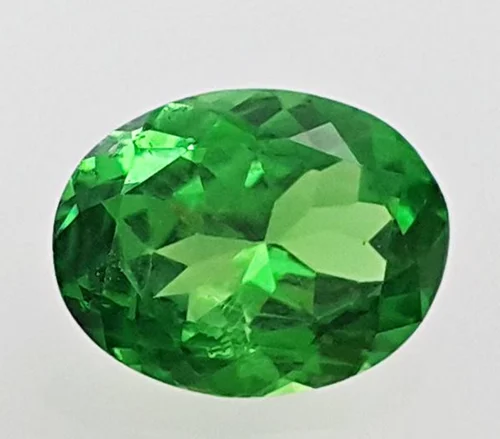
In my opinion, it is the best Emerald alternative. Like Tourmaline, Garnet comes in an array of colors, but they may not be as popular. The term ‘Garnet’ often brings to mind archaic and dark jewelry associated with grandmothers. But when it comes to green variations, Tsavorite Garnet easily stands out as an Emerald alternative. Of course, it is not the most affordable, but Tsavorite Garnet has a vibrant green color easily obtainable in clean and top-quality specimens.
As a type of Garnet, it also has stunning fire and brilliance, which is usually missing in darker Garnets. Tsavorite garnet gets its green color from the element vanadium, similar to Emerald. Hence, it can rival Emeralds in terms of intensity and color. Personally, Tsavorite Garnet is one of my most loved gemstones. With a hardness rating of 7-7.5 on the Mohs scale, it is perfect for use as a ring stone.
2. Peridot
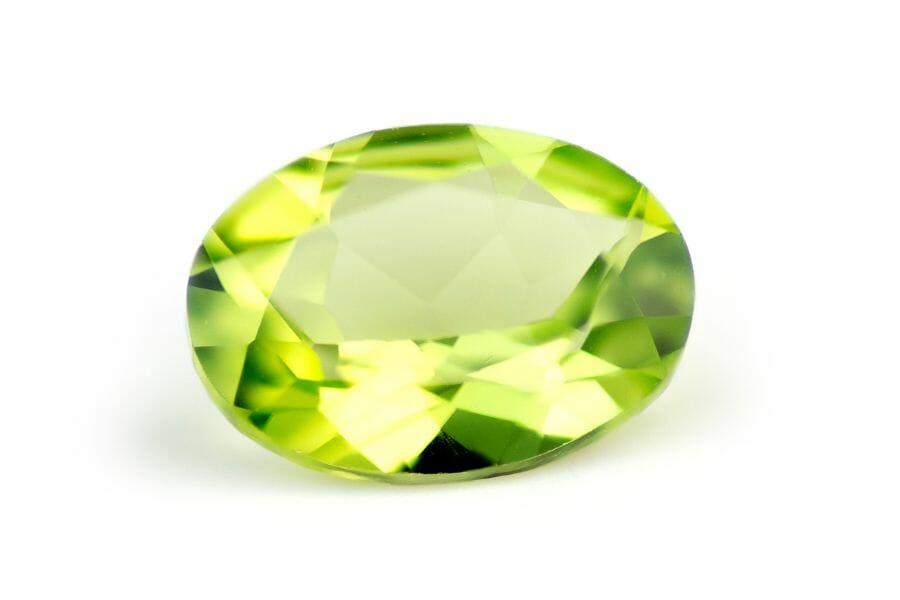
Source: rockchasing.com
It is another Emerald alternative worth considering. While it may not perfectly mimic the vibrant green of the Emerald, it offers affordability and has been mistaken for Emerald in the past by many. Cleopatra’s renowned Emerald collection is known to have Peridot. You can easily find clean Peridot stones up to 6mm, but beyond that, it becomes more challenging to find superior-quality pieces sans inclusions. While the characteristic lily-pad inclusions of Peridot can be visually appealing, it also has minute, less attractive black mineral inclusions. I have clean peridot stones up to 6mm in my personal collection. However, the 8mm stones might have some black inclusions.
You can find larger clean Peridot stones, too, but they come at a higher price. Peridot pairs beautifully with gold, accentuating its warm tones. But it is not recommended for rings because of its softness on the Mohs scale, 6.5-7. It puts it at risk of abrasion. The yellowish-green color of Peridot is attributed to the iron content. These are sourced from Arizona and China in the USA. You must be cautious with Peridot to avoid the risk of stone cracking by avoiding sudden temperature changes after soldering and refraining from ultrasonic cleaning.
3. Tourmaline
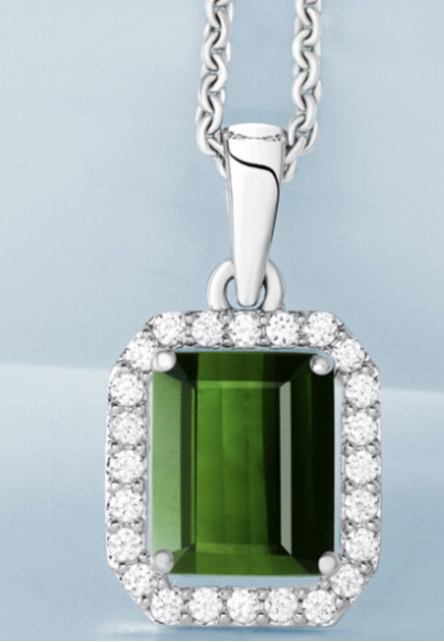
Source: navratan.com
Tourmaline presents an impressive selection of colors, making it an outstanding choice. Though some green Tourmaline shades incline towards yellow, the vibrant grassy green is sufficiently lively to serve as an excellent Emerald alternative. Further, the superior-quality Chrome Tourmaline can even rival Tsavorite and Emerald in terms of appeal. Respected as a gemstone in its own right, Tourmaline obtains its color from iron and potentially titanium, with the bright green stones containing vanadium and chromium traces like Emerald. With a Mohs hardness rating of 7-7.5, it is one of the most durable alternatives amongst our potential substitutes. Hence, you can use it in rings, but with caution.
4. Chrysoprase

Source: gemadventurer.com
It is a viable alternative, especially for translucent Emeralds usually seen in beads and polki cuts. The Emeralds employed in such designs usually present lackluster color, luster, and noticeable inclusions. On the contrary, chrysoprase usually has a cleaner appearance and a brighter hue. The name “Chrysoprase” originates from the Greek term for “golden apple.” Its stand-out color is vibrant green with a subtle hint of yellow. Hence, it is a superior choice for earrings. Like Peridot, Chrysoprase is ideal for settings in yellow metals. But it is relatively soft, rating 6-7 on the Mohs scale. Hence, it is recommended for pendants or earrings that won’t be subjected to rough treatment. The accompanying earrings exemplify the opaque, clean material with a captivating blue-green shade reminiscent of Emerald.
5. Chrome Diopside
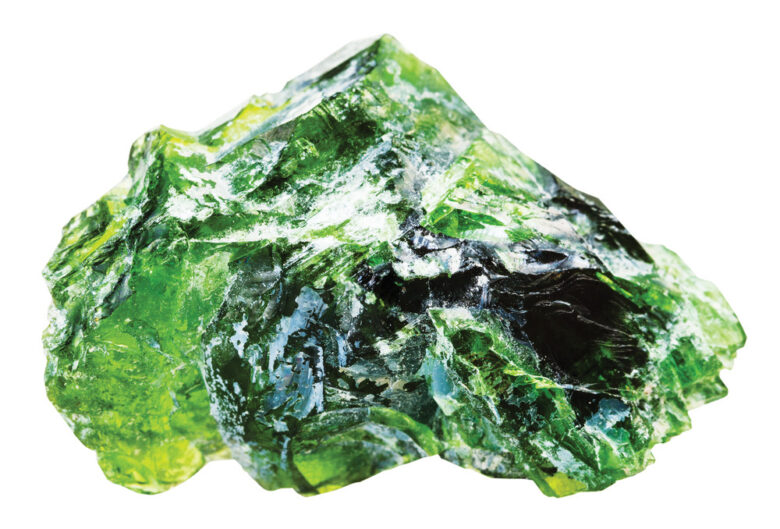
Source: gemporia.com
It is an excellent Emerald alternative because of the lack of routine treatment and natural clarity, surpassing Emeralds in this regard. Its saturated green color depicts a dazzling sparkle, attributed to the presence of vanadium or chromium – similar elements that give Emerald its green color. But please note that Chrome Diopside can look excessively dark in larger sizes, demanding precise cutting to maintain an appealing, open color.
On the contrary, the quality allows it to retain excellent saturation even in smaller sizes. It is not recommended as a durable ring stone, given a relatively soft hardness of 5.5 to 6 on the Mohs scale. Further, the softness means that facet edges may gradually wear down over time.
6. Green Beryl
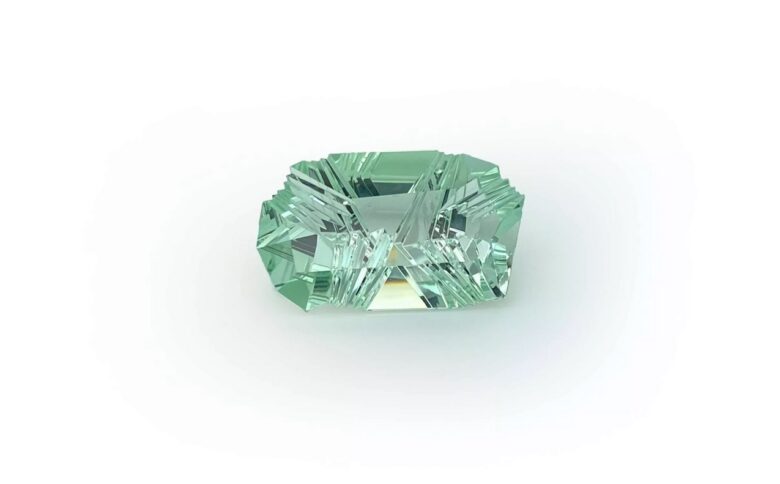
Source: biron-gems.com
A widely recognized cyclosilicate mineral, Green Beryl exhibits its green color because of iron traces in its composition. It is frequently mistaken for Emerald as it comes from the Beryl family and shares the same chemical composition. However, the primary distinction lies in the fact that Green Beryl contains only mineral amounts of vanadium and chromium, the elements responsible for the green color in emeralds. Instead, iron is responsible for color in green beryl, resulting in a lighter and more yellowish-green hue.
But Green Beryl is much less valuable and popular than Emerald but is a common substitute for the Panna stone. However, with careful effort and searching, you can find a Green Beryl that resembles Emerald’s color intensity. Yet it will still lack the unique qualities that make emeralds highly sought after.
7. Green Glass
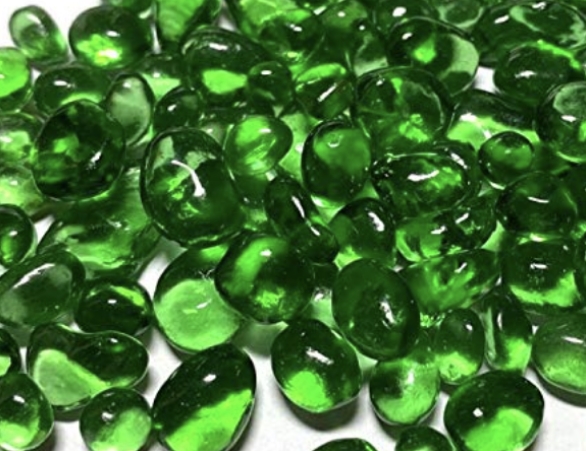
Source: amazon.com
It is a popular substitute for Emeralds and an affordable alternative for creating jewelry pieces accessible to a vaster audience. Across history, Green Glass has been employed widely in the jewelry industry and utilized as a replacement for emeralds in notable items such as the Crown Jewels of England.
In my opinion, it is an excellent practical and economical alternative for someone seeking the appearance of Emerald while remaining budget-friendly. But please note that the green glass does not have the same durability as Emerald and possesses a softer composition. Hence, proper attention and care are imperative for its longevity. Lastly, green glass is relatively less lustrous and fails to capture a similar color depth as Emeralds.
